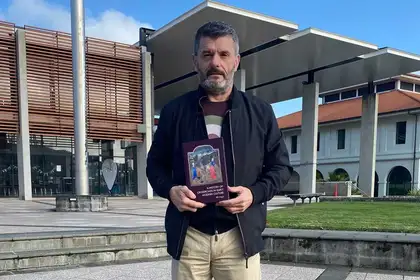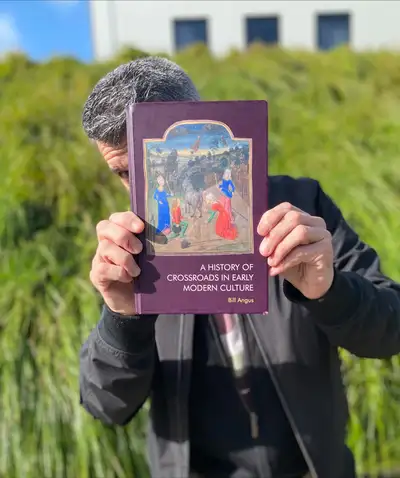
Dr Bill Angus
A History of Crossroads in Early Modern Culture tells the story of how physical crossroads have in history been culturally vital sites where human, demonic and divine forces were felt to converge.
The book, written by Dr Bill Angus, focuses on the history and literature of physical crossroads: their rituals of transformation, their associations with music, their religious and magical encounters, their binding of unwanted spirits and their links to ancient cosmology.
“Everything and everyone seem always to be at some kind of crossroads,” says Dr Angus. “If you search ‘crossroads’ in Google Scholar you’ll get over half a million results – ranging from Capitalism at the Crossroads to Dragonflies at the Crossroads. These titles employ the very old and very human metaphor of the crossroads to indicate a time of decision or of significant change.”
For much of human history, physical crossroads were just as important as the metaphor, he adds.
“We may not take much notice of them now as we wait for the traffic lights to change, but at one time crossroads were culturally vital sites where human, demonic and divine forces were felt to converge. In many places and times, crossroads seemed to render the boundaries between these spheres negotiable, subject to certain artifice and timing.
“Crossroads gave access to gods and facilitated deals with devils. They were potent sites for rituals intended to influence lovers or harm enemies, and even provided a stage for communal festivity and a burial ground for any unwanted dead who were cast out in ceremonies of the night,” Dr Angus says.
Dr Angus is senior lecturer in Early Modern Literature. He has published widely on early modern metadrama and the material conditions that generate it, on the artefacts of protection from evil, and on the historical roots of the mythology of popular music.
If you would like to find out more about crossroads and their history you can in Bill Angus’s A History of Crossroads in Early Modern Culture, published by Edinburgh University Press, here.

Bill Angus with new book A History of Crossroads in Early Modern Culture